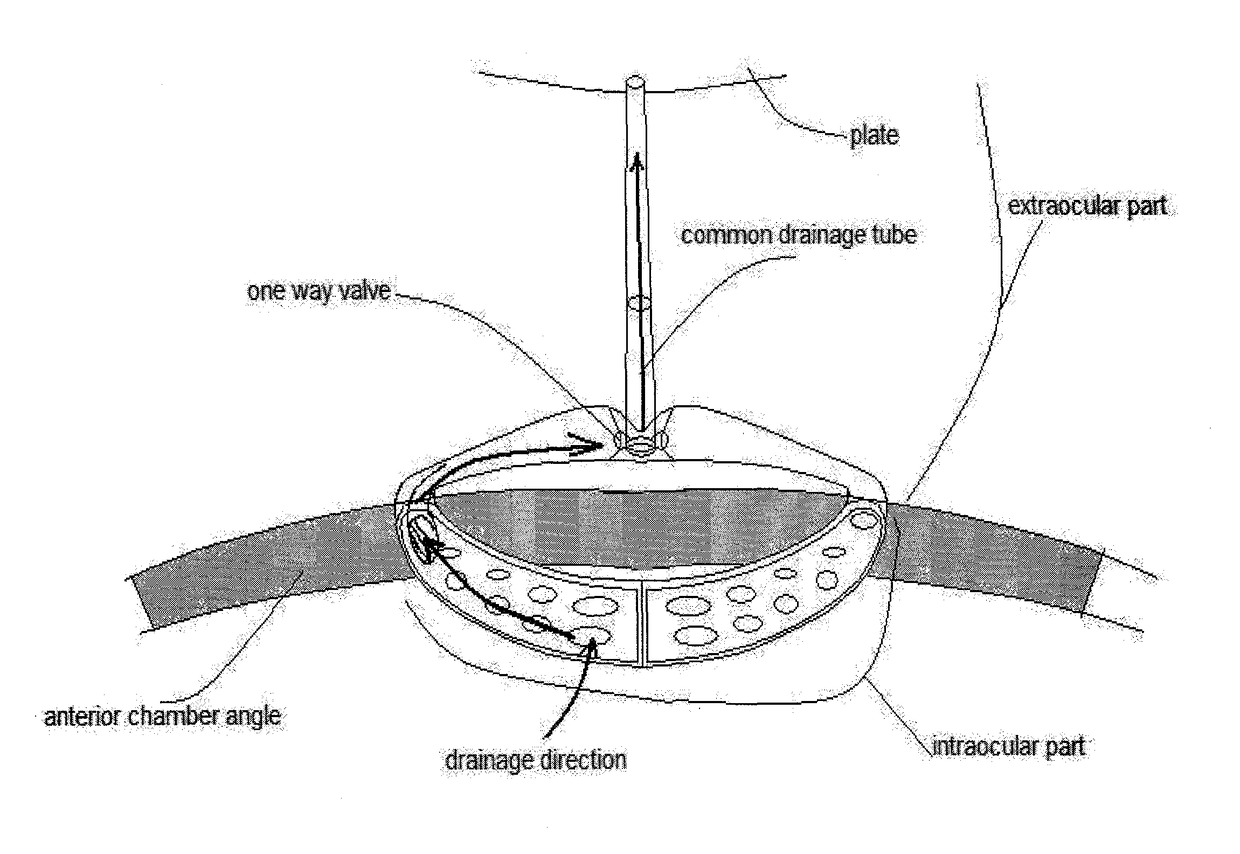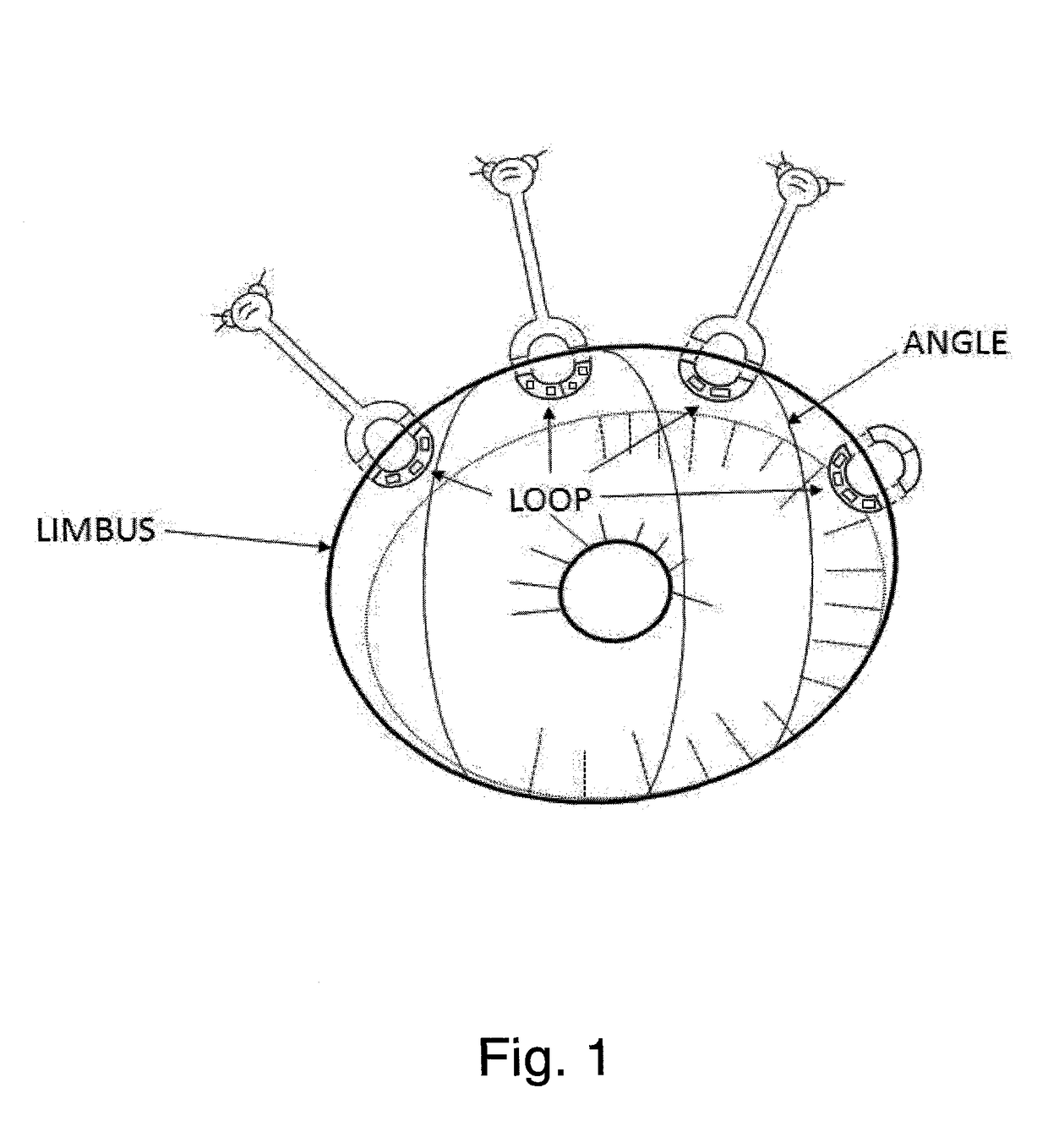Toroidal glaucoma drainage device
a glaucoma and drainage device technology, applied in the field of implantable devices for ocular drainage, can solve the problems of hardly tolerable side effects, failure to control eye pressure, late-onset blebs,
- Summary
- Abstract
- Description
- Claims
- Application Information
AI Technical Summary
Benefits of technology
Problems solved by technology
Method used
Image
Examples
Embodiment Construction
[0022]An intraocular drainage device has now been designed that enables to adjust the amount of the exiting liquid according to observed intraocular pressure values, so that glaucoma problems may be more easily managed than with known devices. The device has a torus-shaped outer surface comprising an impermeable and laser insensitive membrane on which a plurality of laser-sensitive spots are placed, potentially forming a plurality of exits for the eye fluid after being eventually opened by applying YAG laser light—according to the need. The laser-sensitive spots are preformed during manufacturing of the device and exist before implanting the device to the eye. Preferably, one or more devices are placed in the angle area of the eye suffering from glaucoma, near / through the limbus. More spots, preformed on the torus surface, are laser-irradiated, resulting in higher permeability of the toroidal device or devices, providing higher fluid flow. This enables fine regulation of the drainag...
PUM
 Login to View More
Login to View More Abstract
Description
Claims
Application Information
 Login to View More
Login to View More - R&D
- Intellectual Property
- Life Sciences
- Materials
- Tech Scout
- Unparalleled Data Quality
- Higher Quality Content
- 60% Fewer Hallucinations
Browse by: Latest US Patents, China's latest patents, Technical Efficacy Thesaurus, Application Domain, Technology Topic, Popular Technical Reports.
© 2025 PatSnap. All rights reserved.Legal|Privacy policy|Modern Slavery Act Transparency Statement|Sitemap|About US| Contact US: help@patsnap.com



